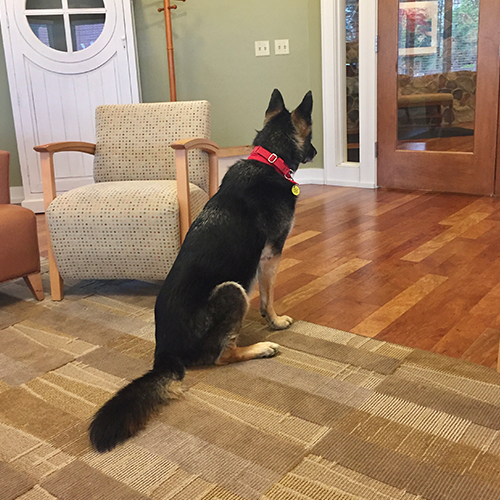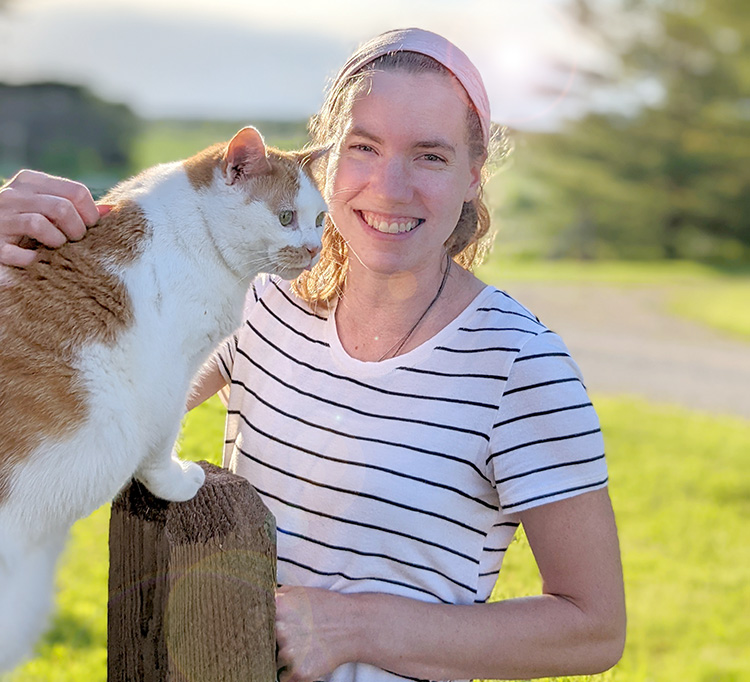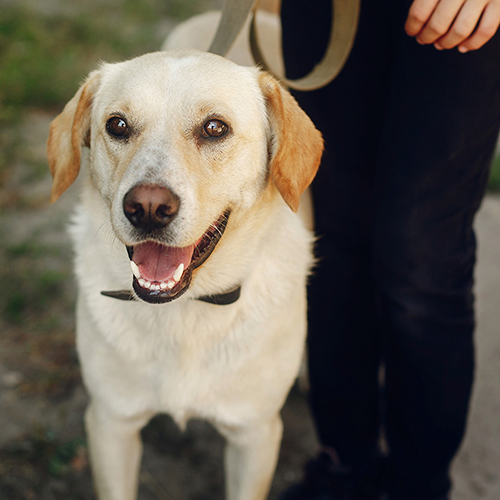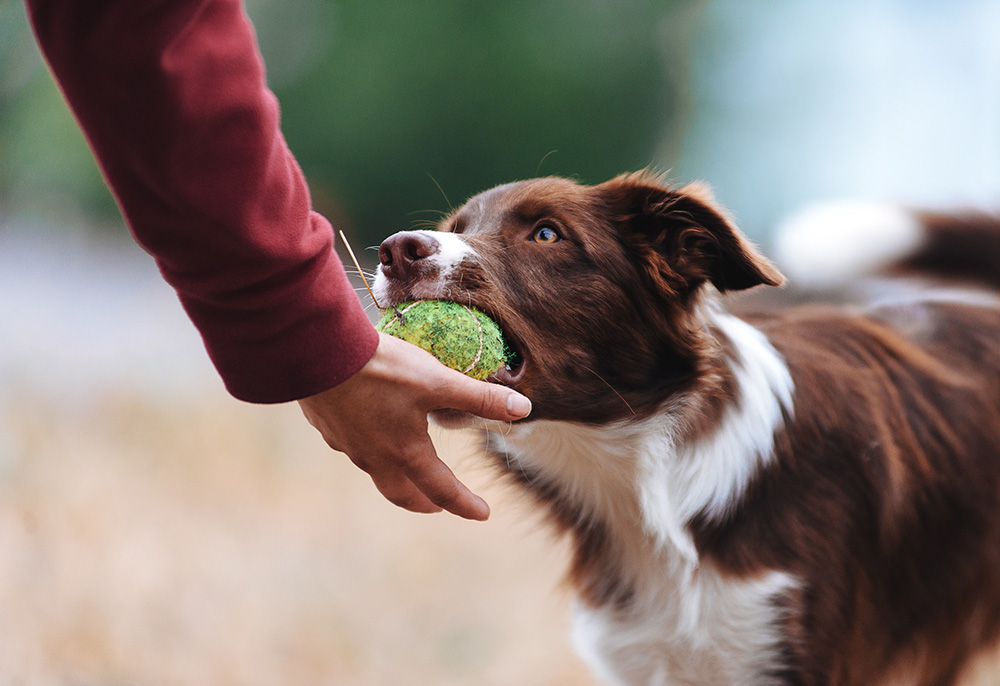The bond between humans and animals has existed for thousands of years. Having positive influence on health and well-being, this bond can be dynamic and mutually beneficial.
Pictured above: What may be a simple game of fetch for one person may evoke anxiety in someone with contamination OCD. Taking a ball from a trained facility dog and using coping skills to manage emotions is one example of how a canine assisted intervention can be used to help patients meet a treatment goal.
Over the years, many members of the clinical staff at Rogers Behavioral Health have witnessed the benefits of this relationship as patients interacted with the four-legged companions who came to visit Rogers. Shoulders relaxed. Smiles grew. Connections were made.
Enter Cross, a German Shepherd that had an intuitive nature for working with individuals who have behavioral health challenges such as OCD, anxiety, and depression. For the last five years of his life, he worked solely with patients at Rogers, sometimes even on a one-to-one basis. His ability to assist individuals alongside the clinical staff and break through barriers to reach a treatment goal is what inspired the Canine Assisted Intervention (CAI) program.
Sadly, Cross passed away in December of 2020. Shortly after, the “Paws Against Pain” fundraising initiative was created. Led by Steve and Rhonda Murphy in memory of their beloved companion, they worked with Rogers Behavioral Health Foundation to secure the $250,000 needed to launch the program.
In May of 2022, almost one and a half years later, the CAI program at Rogers is moving forward into the implementation phase. It is because of the Murphy’s dedication and financial support – along with contributions from more than 100 friends and donors, including the Greater Watertown
Community Health Foundation – that Rogers was able to hire Danielle Schilling, experiential therapist, to help implement the program.

A graduate of UW-River Falls, Danielle holds a Bachelor of Science degree in animal science with an emphasis in companion animals and a minor in psychology.
“Having grown up on a farm just outside Watertowtown, Wisconsin, I always knew I wanted to work with animals,” said Danielle. “I’m grateful for the opportunity to launch the CAI program at Rogers.”
Danielle explained that CAI is different than a traditional pet therapy program. Unlike pet therapy, CAI contains goal-oriented, structured interactions for the purpose of improved health and wellness. At Rogers, CAI will be used for specific residents to help them achieve an identified treatment goal.
Danielle’s role is to work with the patient’s treatment team to design and facilitate activities that will bring the patient closer to meeting their goal. For example, a patient with a fear of contamination may begin by just being in the same room as the dog. Then, they may work up to petting and grooming the dog. Eventually, they could work up to taking the dog for a walk and other forms of close interaction. Another example includes teaching the dog a new trick. This requires the patient to use verbal and non-verbal skills as well as coping skills to work through any frustration or anxiety and, ultimately, build mastery as they see progress being made. In turn, these skills will be of value in achieving additional goals during treatment.
The CAI program will eventually be assisted by a “facility dog.” A facility dog has the same level of task training as a service dog, but they are willing to work with any person, while a service dog is trained to focus on and assist just one person. Facility dogs differ from therapy dogs in that they have more obedience and task training, and they serve at a single facility on a full time basis.

“Because of the demand for therapy dogs in general right now, it’s hard to know when a dog will be available to us,” said Danielle. “I’ve recently submitted applications to a few training facilities. The first step, really, is to determine what characteristics and training the dog should have in order to best serve Rogers’ population. After that, we’ll be placed on a waiting list for a match. It could take from a few months to a few years to receive a dog, depending on availability.”
To move the CAI program forward until an official facility dog is available, Danielle will be working with Rogers’ volunteer pet therapy dogs. Together, they will perform some initial one-to-one, goal-oriented interventions. This will offer Danielle the opportunity to analyze different interactions and develop policies and procedures that will be used to standardize CAI across different treatment programs.
Because of this standardization, our ability to evaluate outcomes will be enhanced, allowing us to better predict the effectiveness of canine assisted interventions on specific populations (gender, age, diagnosis, etc.). While there have already been some outside studies performed, the lack of standardization in how, and with whom, CAI is conducted has hampered the ability for CAI to be considered “evidence-based.”
Currently, the CAI program at Rogers is being piloted in the residential treatment programs for adults and adolescents with OCD, anxiety, and depression. Danielle has been working in these departments to better understand their treatment goals and develop a system for tracking outcomes within Rogers’ electronic health record system.
We anticipate that Danielle’s work will not only benefit patients at Rogers, but it will lead to more intensive research with the goal of shedding light on best practices for how CAI can be facilitated within the behavioral health community.

